Hunting Provost T.Mk 1

MikroMir, 1/48 scale
S
u m m a r y : |
Description and Item No.: |
MikroMir Kit No. 48-014 - Hunting Provost T.Mk 1 |
Contents and Media: |
56 parts in grey styrene, 11 in clear, 31 in PE, die-cut masks, and one decal sheet with markings for 3 airframes. |
Price: |
GBP£29.70 EU Price (£24.75 Export Price) Plus Shipping from Hannants |
Scale: |
1/48 |
Review Type: |
First Look |
Advantages: |
The kit scores high on the novelty scale and with the simple engineering and low parts count will be a relatively quick build. |
Disadvantages: |
As a limited production kit, a lot of test fitting, cleaning, and prepping of parts will be required. |
Recommendation: |
The engineering is simple, the details are sufficient, and the completed model will be a head-turner at the next model show. Those of us imprinted on the Provost in our childhood will need no prodding to give this kit a go. |
Reviewed by John Miller

Airfix's 1/72 scale Sea King is available online from Squadron.com
(Edited from Wikipedia)
The Percival P.56 Provost is a basic trainer aircraft that was designed and manufactured by British aviation company, Percival.
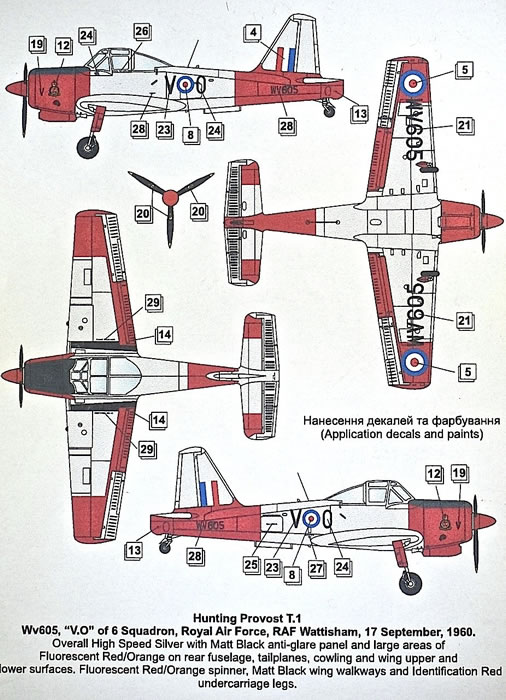
During the 1950s, the Provost was developed for the Royal Air Force (RAF) as a replacement for the Percival Prentice. Designed by Henry Millicer, it was a single-engined low-wing monoplane, furnished with a fixed, tailwheel undercarriage and, like the preceding Prentice, had a side-by-side seating arrangement. First flying on February 24, 1950, the prototypes participated in an official evaluation, after which the type was selected to meet Air Ministry specification T.16/48.
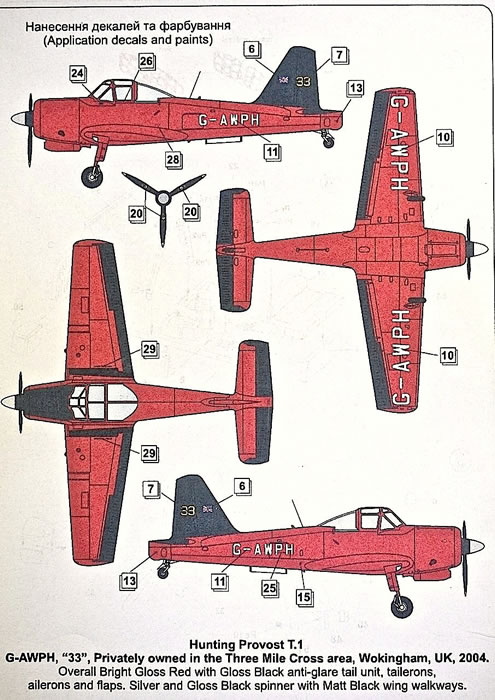
The Provost entered service with the RAF during 1953 and quickly proved to be more capable than the preceding Prentice. It was a relatively successful aircraft, being exported for multiple overseas operators. Various models were developed (armed and unarmed) to meet with customer demands. The Provost was later adapted to make use of a turbojet engine, producing the BAC Jet Provost. During the 1960s, the type was withdrawn from RAF service in favour of its jet-powered successor. The Provost continued to be used for decades after with various export customers.
The initial impression is one of second generation Special Hobby/MPM. I am a huge fan Special Hobby and have insulated a lot of my shop with their unbuilt kits and have more of same, built, and on display in my cabinet so I mean that as a sincere compliment. That said, it also indicates that this is a limited-production kit that lacks the fidelity of a Tamigawa and will require extra effort to get the most out of what’s in the box. Such a build will force you to develop (or dust off) some handy building skills and require more forethought as to test fitting and sequencing. Once built, you will have a pronounced sense of accomplishment, more skills at the ready in your bag of building tricks, and a model that’s practically never seen at the local model show. That’s why I really like the old MPM/Special Hobby kits and why I’m loving this kit already.
In the Box
There are not a lot of parts in this box (one bagged sprue) but close examination quickly reveals a very high level of detail. The kits layout and engineering are conventional and will allow for a straightforward build but this will not be a shake ‘n bake by any means.
The sprue gates are somewhat thick and there is a bit of flash on some parts; typical with most limited run kits. Time will have to be spent removing and cleaning parts prior to priming.
The recessed surface detail is sufficient for this scale and even throughout if not a bit soft in areas. A quick re-freshening with micro files and a scriber will be required to make some of the details crisper.
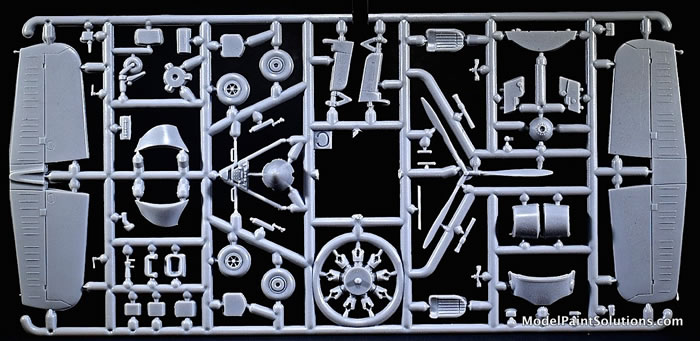
As usual, assembly begins with the cockpit, and what a large cockpit it is. This is the kind of kit that super-detailers can really make shine. The large instrument panel is composed of a decal with gauges sandwiched between a plastic backing and a PE front panel.
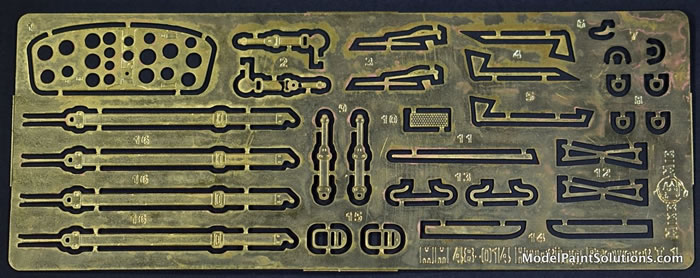
This arrangement is sufficient, but given how visible the panel will be when the model is complete, replacing the gauges with one of multiple aftermarket options would really look awesome.
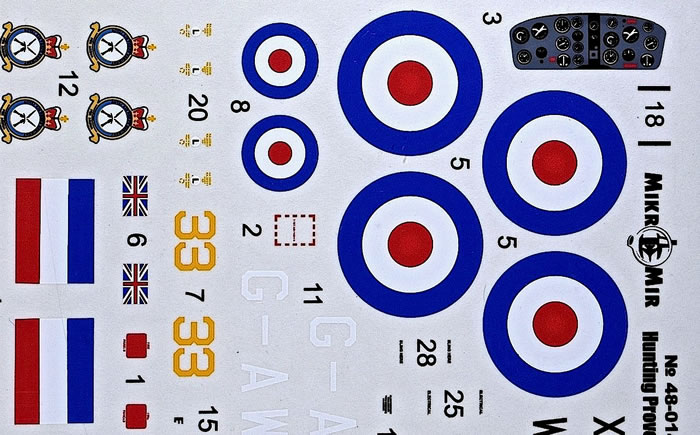
The seats, center console, sticks, rudder pedals, and rollover support are all nicely molded and sufficient but crying for additional detail in the form of levers, toggles, etc. Photo-etch seat harnesses are provided but you’ll want to have your spares box at hand at this point in the build. As with the rest of the cockpit, the fuselage side panes are sufficiently detailed, as is, but would benefit from some augmentation.
The assembled cockpit and engine are trapped between the fuselage halves, which fit very well after a little dressing with sanding sticks.
The wing is composed of a full-span lower piece with two half-span upper pieces. The horizontal stabilizer/elevators are halved while the rudder is a single piece. The main gear legs are single-pieces as are the nicely molded main wheels.
Various airframe details such as actuators, wing tie-downs, windscreen wipers, and antennae are provided in PE and will add a lot to the completed model.
The canopy parts are clear and nicely molded.
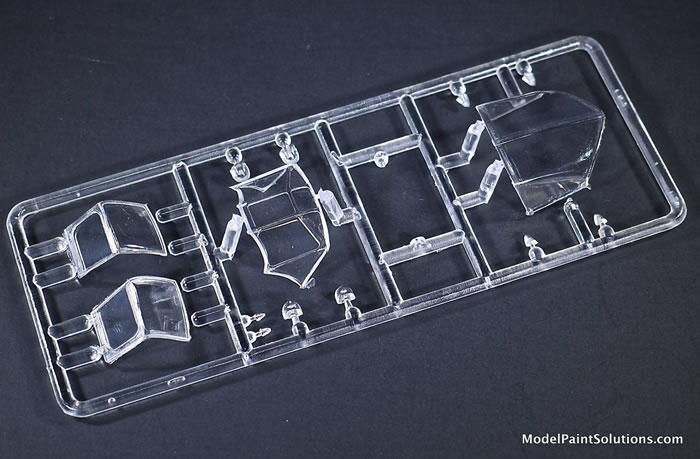
A little wet buffing with Novus plastic polish and they’ll be ready for use. The die-cut masks have crisp edges and look sufficient for the job.
Color and Markings
The decals, by MikroMir, are well printed with good color density.
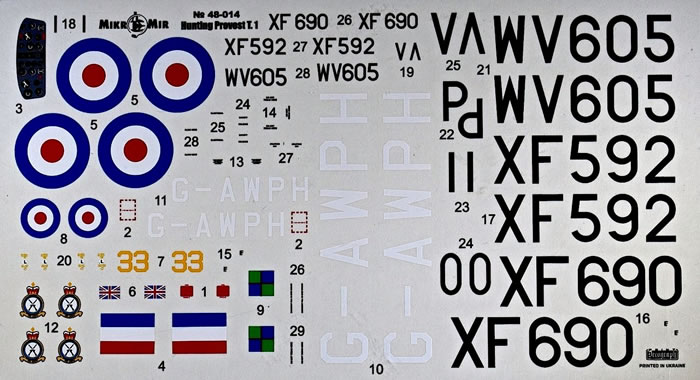
Markings for three airframes and airframe stencil data are provided as follows:
-
Hunting Provost T.1, Privately owned, Wokingham, UK, 2004.
-
Hunting Provost T.1, Xf690, Typical Post-War Training Colors.
-
Hunting Provost T.1, Wv605, “V.O” of 6 Squadron, Royal Air Force, RAF Wattisham, September 17, 1960.
This is a very neat kit: if there were only more modeling hours in the day. The engineering is simple, the details are sufficient, and the completed model will be a head-turner at the next model show. Those of us imprinted on the Provost in our childhood will need no prodding to give this kit a go. A sincere thanks and well done to the folks at MikroMir.
Highly recommended!
Review kit provided my wallet, again.
For more on this review visit Modelpaintsolutions.com.
Review Text and Images Copyright © 2020 by John Miller
Page Created 28 January, 2020
Last updated
28 January, 2020
Back to HyperScale Main Page
Back to Reviews Page

|
Home
| What's New |
Features |
Gallery |
Reviews |
Reference |
Forum |
Search